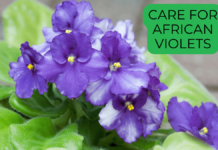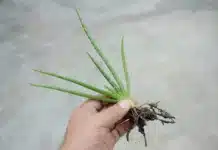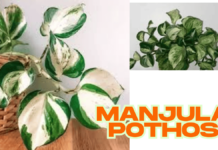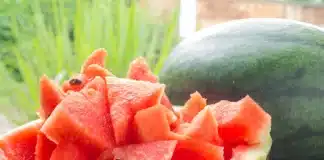Introduction
Here we’ll walk you through Why Should aloe vera be cloned makes sense, how to do it, and what benefits it offers—both for your plant collection and the environment. We’ll dig deep into reliable, sustainable propagation methods, and include tips based on hands-on experience.thriving aloe vera plant and thought, “Wouldn’t it be great to have more just like this one?” Well, cloning aloe vera is not only possible, it’s incredibly rewarding.
Why Should aloe vera be cloned?
Why It is Important
Cloning aloe vera is a simple and sustainable way to multiply healthy plants while preserving their unique medicinal and air-purifying benefits.
The Basics of Plant Propagation
Propagation is the process of creating new plants from an existing one. When you clone aloe vera, you’re essentially making genetically identical copies of a healthy plant—without using seeds.
Why Clone Instead of Grow from Seed?
- Seeds can be unpredictable.
- Cloning maintains desired traits.
- It’s faster and more reliable, especially for beginners.
The Most Popular Aloe Vera Cloning Methods
1.Offsets or Pups – Nature’s Ready-Made Clones
Offsets, also called pups or offshoots, are small plants that grow at the base of the main plant.
How to Separate Aloe Vera Pups
- Wait until the pup has several leaves and a few roots.
- Use a sharp, clean, sterile knife or scissors.
- Cut carefully at the base—avoid damaging the roots.
- Allow the cut-side-down area to callus over for a few days.
- Replant in a pot with a cactus or Rosy Soil mix.
2.Leaf Cuttings – A Common But Tricky Method
Though not always successful, some people propagate aloe vera from leaf cuttings.
Steps for Using Leaf Cuttings
- Use a sharp knife to cut a healthy, mature leaf.
- Let it dry until a scab or film forms.
- Dip in cinnamon, honey, or willow water as a natural root hormone.
- Plant the cut side down in moist, well-draining soil.
3.Division – Perfect for Large, Clumped Plants
When your aloe forms a large clump with multiple mature rosettes, division is the way to go.
How to Divide an Aloe Vera Plant
- Gently remove the entire plant from the pot.
- Separate clumps at the roots.
- Cut away any infected or rotting roots.
- Replant each rosette in fresh, eco-friendly, well-draining soil.
4.Soil, Potting, and Drainage: Laying the Groundwork
Choosing the Right Pot and Soil Mix
- Use pots with at least one drainage hole.
- Include gravel at the bottom to aid drainage.
- Go for a cactus mix or add gardening lime to balance pH between 6.0 to 8.0.
Light, Water, and Climate Requirements
Finding the Ideal Location
- Place your aloe in a bright, warm area with indirect sunlight.
- South-facing or west-facing windows are ideal for indoor settings.
Watering the Right Way
- Allow the soil to dry completely between waterings.
- Soak thoroughly when watering, then let the soil dry again.
- Avoid letting it sit in damp or soaked conditions.
Recognizing Signs of Healthy and Unhealthy Growth
Healthy Aloe Vera Indicators
- Leaves are plump, upright, and straight.
- Color is vibrant green.
- No visible bugs or fungus.
Signs of Trouble
- Curly or drooping leaves can indicate too little light or too much water.
- Mealy bugs and scale appear as white fuzz or sticky spots.
Feeding Your Aloe Vera: Fertilizer and Growth Tips
When and How to Fertilize
- Use a low-strength, phosphorus-rich fertilizer.
- Apply once during spring and again in summer.
- Avoid feeding in winter dormancy.
Why Cloning Aloe Vera Is Eco-Friendly and Sustainable
Less Waste, More Plants
Cloning lets you create multiple plants from one, minimizing waste and reliance on chemical propagation agents.
Share the Green
You can share your clones with friends, expand your indoor garden, or even donate to a nursery or garden shop like Artemisia Nursery with their permission.
Care-Taking After Propagation
Step-by-Step Aftercare
- Water only when dry.
- Keep in a warm, bright location.
- Watch for signs of infection or rot.
- Be patient—root development takes a few weeks to months.
FAQ
Can I use any leaf to propagate aloe vera?
Not all leaves will root. It’s best to use a healthy, mature leaf, and even then, success isn’t guaranteed.
How long does it take for pups to root?
Anywhere from 2 to 6 weeks, depending on location, temperature, and soil conditions.
What’s the best time to clone aloe vera?
Spring and summer are ideal. Avoid propagation during winter dormancy.
How do I prevent root rot?
Ensure good drainage, avoid overwatering, and use a well-draining soil mix.
Are there natural alternatives to root hormone?
Yes! Use cinnamon, honey, or willow water—they promote organic, natural growth.
Conclusion
Cloning aloe vera is more than just a fun gardening experiment—it’s a sustainable, eco-friendly, and effective way to expand your plant collection, share with others, and enjoy the many medicinal properties and air-purifying benefits of this resilient plant.From using offsets, cuttings, or division, to proper watering, soil, and light management—each step plays a part in ensuring your cloned aloe plants thrive.


























